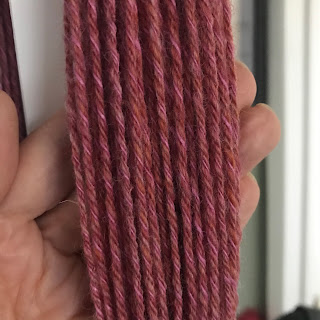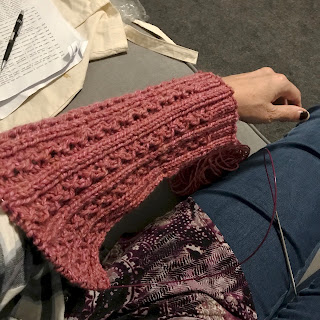I
n part 1 I wrote about using Kendall Down's Knitwear Designer on a BBC micro to generate my knitting pattern.
That was November 2020. I'm not a fast knitter. I tend to just knit a few rows each day rather than spending hours at a time on it. Plus I spun the yarn for this project. Here it is done. I don't have a record of the exact measurements I fed into the program, but the fit is fantastic, so top marks to Kendall Down.
For those interested in the details of the spinning and knitting, I made quite a chunky yarn. (The gauge I gave the program was 5 stitches per inch, which I got on 4.5mm needles). I made a 4-ply yarn with 3 plies of Devonia from John Arbon, which is a blend of British sheep breeds, and one ply of Tussah silk dyed 'cyclamen' by Katie of Hilltop Cloud








Comments
Post a Comment